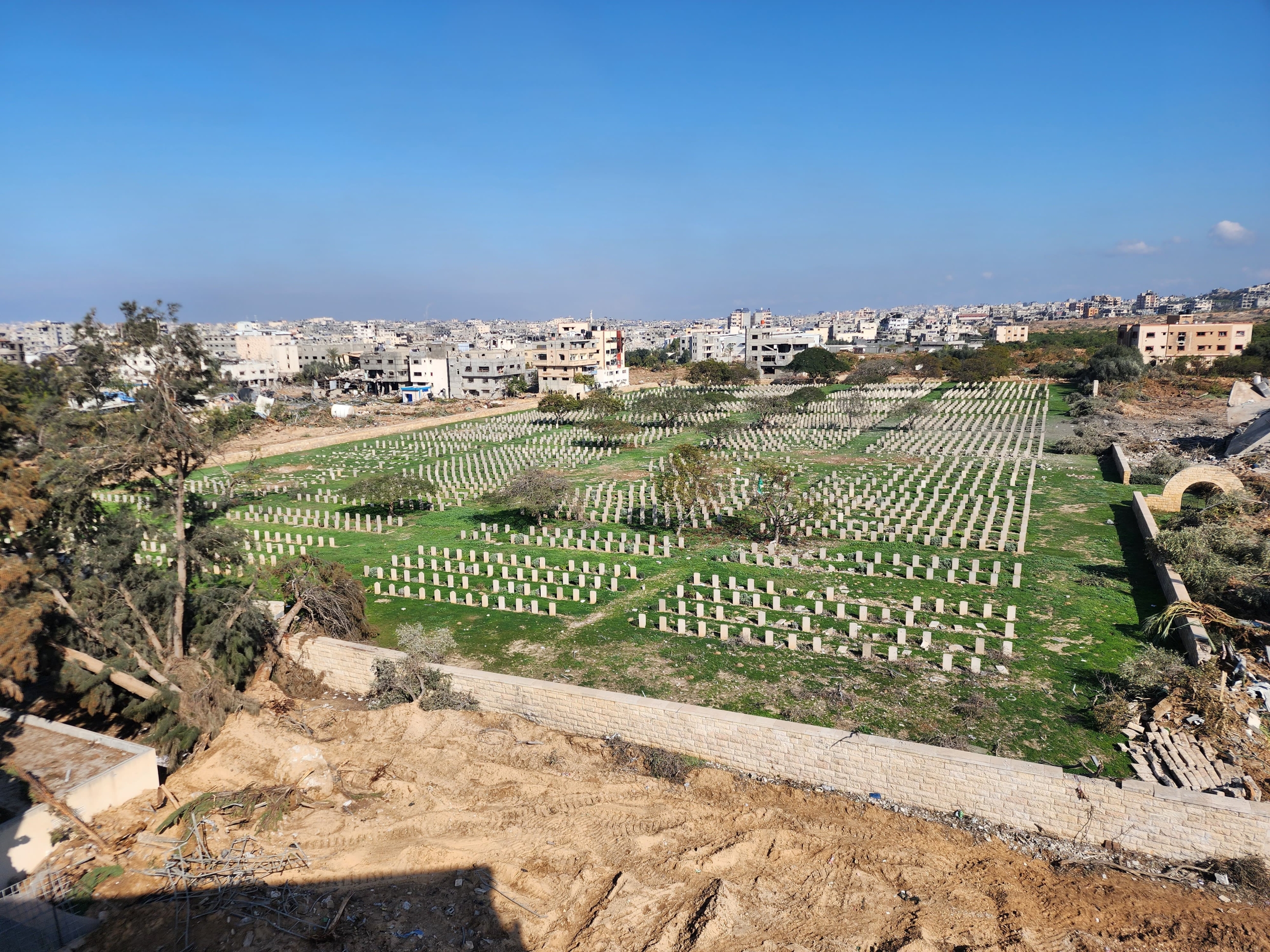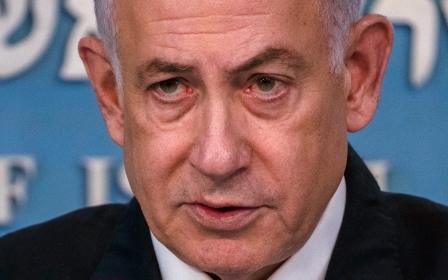Gaza's British cemeteries are the only ones Israel isn't destroying

In the Gaza Strip there are two cemeteries that contain the remains of British soldiers, most of whom died fighting in World War One, a few of whom died in World War Two.
Owned by the UK-based Commonwealth War Graves Commission, they are known locally as the British graveyards, and are regarded as a major cultural and archaeological site in the Palestinian enclave.
Adorned by bushes and surrounded by tall cypress trees and a low wall against which various flowers are in bloom in a calm atmosphere, hundreds of Gazans have for years visited them to relax.
The Gaza War Cemetery lies in al-Tuffah neighbourhood in the north of Gaza. It has 3,217 graves, of which 781 are unidentified. Second World War burials number 210. There are 30 post-war burials and 234 war graves of other nationalities.
The other is located in the north of Deir al-Balah, in the area of al-Zwayda. Inside it lie 724 soldiers, all of them British.
New MEE newsletter: Jerusalem Dispatch
Sign up to get the latest insights and analysis on Israel-Palestine, alongside Turkey Unpacked and other MEE newsletters
Some of the cemetery's earliest burials were made by British soldiers involved in the battle for Gaza with the Ottoman Empire in 1917 and 1918. During the Second World War, British Empire forces - mostly Australian - ran a number of hospitals in Gaza.
Both cemeteries have survived since Israel's war on Gaza began, just as they have survived many conflicts before.
In 2006, the Gaza War Cemetery was partially damaged by an Israeli missile. Israel paid £90,000 as compensation. In addition, about 350 headstones needed repair after Israel’s three-week assault on Gaza in 2009.
Few areas of Gaza have been spared the onslaught of Israel’s latest military operation. But compared with the scores of Palestinian graveyards left in ruins by the assault, the British cemeteries appear to have been consciously avoided.
The two cemeteries have been subject to only partial damage as a result of attacks nearby while neither the graves nor their headstones have been touched.
In May, the Commonwealth War Graves Commission said: “We are aware that both cemeteries have suffered damage, but the extent is currently unknown. We will, however, restore those sites to a befitting standard as and when circumstances allow.”
'We dig tens of metres deep into the ground to bury people. There were days I had to bury 300 or 400 people'
- Abu-Jawad Baraka, undertaker
Dozens of residents and journalists have been prevented by the Commonwealth War Graves Commission and the Israelis from passing by or photographing the cemetery in Deir al-Balah.
Fadel Keshko, displaced from the north of Gaza, tried to visit the graveyard recently. He told Middle East Eye that the restrictions imposed on people preventing them seeing the cemetery leave “a big question mark”.
“I had visited my grandmother and fancied seeing the cemetery on my way home. I was shocked to see that none of the graves were touched. Nearby air strikes caused only partial damage to the outside fence and walls, he said.
“It’s the same story for the other cemetery. Meanwhile, the graves of Gazans have been bulldozed and their corpses have been stolen. This feels very dehumanising."
'They're sacred to them'
Almost all Palestinian graveyards across Gaza have been destroyed and ransacked since the war began following the 7 October Hamas-led attack on Israel.
Al-Shujayya, Beit Hanoon and Khan Younis's cemeteries have all been wrecked, as well as the graveyard of the Church of Saint Porphyrius - believed to be the world's third oldest church - which was reduced to rubble.
As Israel continues to expand its military operations in Gaza, the death toll has been escalating. In Deir al-Balah, where more than a million people are now taking shelter after the invasion of Rafah, only one out of two graveyards now functions.
Running out of capacity since January and receiving scores of corpses every day, the municipality of Deir al-Balah has been reliant on mass graves to absorb the influx.
Abu Jawad Baraka, a 64-year-old undertaker at the graveyard, spoke to MEE about this situation.
“The continuous Israeli bombardment leaves us with no choice. We dig tens of metres deep into the ground to bury people. There were days I had to bury 300 or 400 people. They don’t only come from Deir al-Balah or central Gaza but also from Khan Younis, al-Qarrara, and al-Mawasi," he said.
Israel has dug up many graves searching for the remains of captives taken in the 7 October Hamas-led attack, with many Palestinians unable to find the bodies of their relatives after Israeli troops withdraw. That has prompted many Palestinians to bury their slain loved ones as close to home as possible.
"While our graveyards have been badly damaged and stolen from, we receive no compensation. They even have no protection," Baraka said.
"But Israel can’t cause havoc to the British graveyards and will pay so much money in compensation to repair what was barely damaged. They’re sacred to them, and just thinking about it hurts.”
Middle East Eye delivers independent and unrivalled coverage and analysis of the Middle East, North Africa and beyond. To learn more about republishing this content and the associated fees, please fill out this form. More about MEE can be found here.





